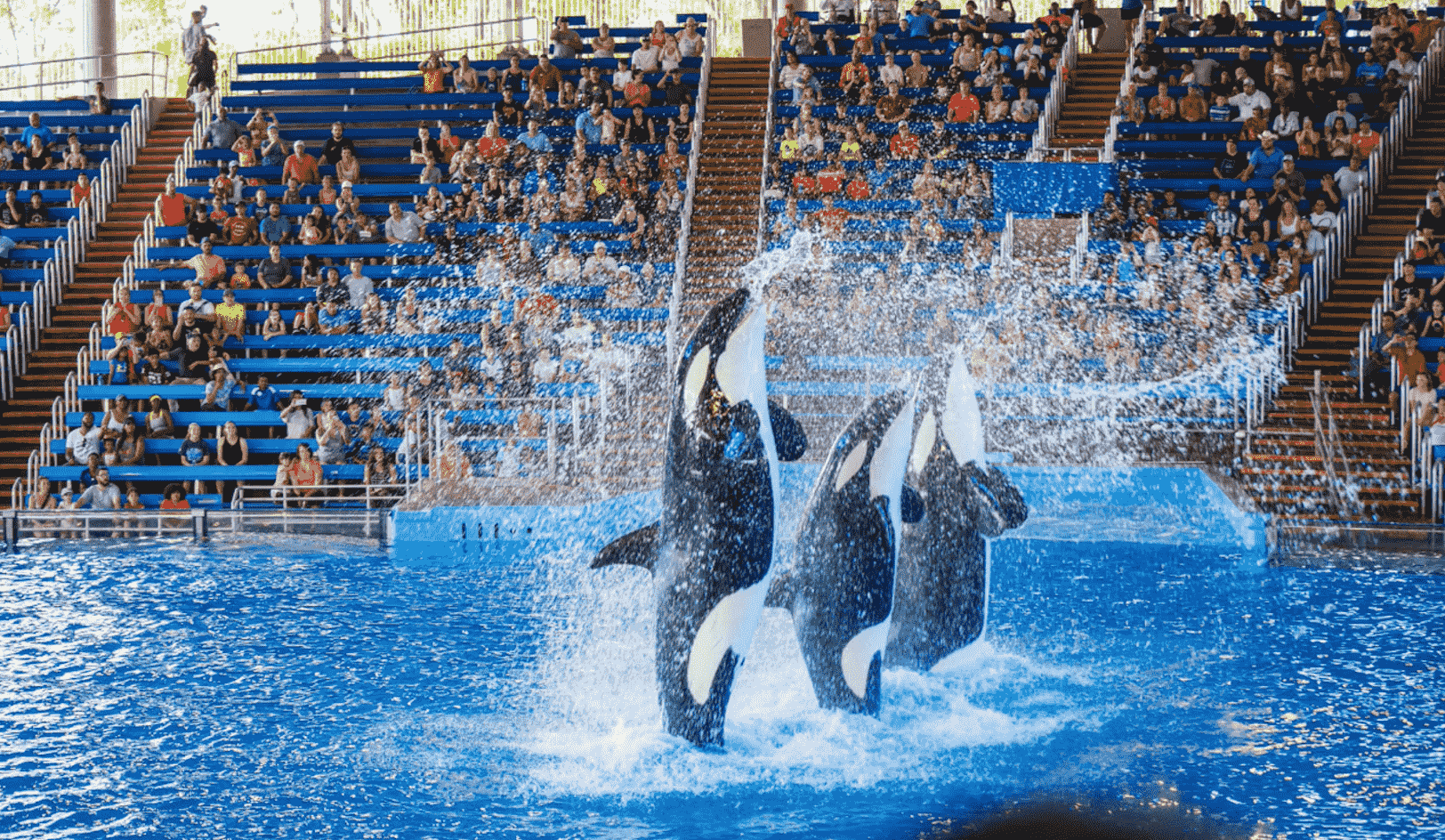
Discover the dark truth about SeaWorld and its orcas, from decades of taking whales from the wild to ongoing captivity.
If you’ve ever stood in front of a SeaWorld tank and thought, “Wow, they look so happy,” I have bad news for you: that smile isn’t real. Orcas don’t smile—they can’t. That perpetual curve of their mouth is a cruel optical illusion, one that hides the truth of decades-long suffering.
For years, SeaWorld has tried to sell a story of education and conservation, but behind the marketing gloss is a different reality—one built on tearing whales from their ocean homes, breaking apart families, and forcing animals to perform tricks for food. And while the company wants you to believe that chapter is closed, SeaWorld and its orcas are still part of a legacy that thrives on captivity. This isn’t just history—it’s happening now.
SeaWorld Taking Whales From the Wild
SeaWorld actively captured wild orcas until the mid-1970s in the Pacific and later in Iceland, capturing entire pods and causing lasting trauma to both individuals and their families. Tilikum, perhaps the most infamous captive orca, was taken from Iceland in 1983 and spent most of his life in SeaWorld Orlando, where he eventually fathered 21 calves under stressful captive conditions. These removals weren’t conservation—they were commodification.
(It’s worth noting that SeaWorld Abu Dhabi has most recently been caught capturing a manta ray from the wild. So while SeaWorld is not capturing orcas for their parks, SeaWorld Abu Dhabi is still taking other species from their ocean homes for profits.)
SeaWorld History: Profits Over Pods

For decades, the SeaWorld brand was built on dazzling orca shows. “Shamu” shows dominated from the 1960s through the 1990s and beyond, but incidents like trainer deaths—including Dawn Brancheau in 2010—exposed the hidden cost of confining apex predators in concrete tanks.
Then came the documentary Blackfish, which ripped the curtain back, showing the world the truth about what captivity does to orcas. Public outrage followed, and in 2016, SeaWorld announced it would end its orca breeding program and phase out its theatrical orca shows. (Spoiler alert: the orcas are still performing, other animals continue to perform, and it’s still not educational.)
The state of California soon passed the Orca Welfare and Safety Act, effectively ending theatrical orca shows and phasing out captivity for the species in the state, but nationwide, the same protections aren’t guaranteed.
Today, 17 orcas remain in SeaWorld parks in the United States, and while they may no longer be captured from the ocean, their lives are still defined by small tanks, artificial groupings, and a complete separation from the wild world they were born to navigate.
How To Stop SeaWorld—And Help End the Suffering
Ending SeaWorld’s orca program wasn’t a gift—it was the result of relentless pressure from advocates, whistleblowers, and everyday people who said “enough.” Here’s how you can help keep the pressure on:
- Don’t Support It: Don’t buy a ticket to SeaWorld or any park that holds marine mammals captive. Every dollar spent is a vote to keep tanks full.
- Raise Awareness: Talk about it. Post about it. Go to protests if you live close by. Share stories of Tilikum, collapsed dorsal fins, and orcas chewing on metal gates until their teeth crack. Change starts with uncomfortable truths.
- Support Policy Change: Push for federal and state legislation to end orca captivity, just as California has done. Advocate for sanctuaries where current captives can live in larger, more natural spaces.
- Demand Sanctuary Over a Lifetime in Tanks: Even if orcas can’t be released into the wild, they deserve something better than a concrete prison. Support organizations working to create seaside sanctuaries and the transfer of orcas to these sanctuaries when appropriate.
Why Taking Action Matters
Every orca is an individual—a thinking, feeling, socially complex being. In the wild, they travel up to 100 miles a day, hunting, playing, and communicating in ways that tanks can never replicate. In captivity, they suffer from chronic stress, shortened lifespans, and abnormal behaviors born of boredom and confinement.
We can’t undo the decades of harm, but we can ensure it ends here.
SeaWorld and its orcas represent a long, painful history. SeaWorld taking whales from the wild destroyed family bonds that can never be repaired and put the future of the Southern Resident orcas at risk. SeaWorld’s history is steeped in exploitation.
Help World Animal Protection continue our fight to end animal exploitation. With your support, we can continue to keep the pressure on companies like SeaWorld who use animals for entertainment under the guise of conservation. Please donate today.